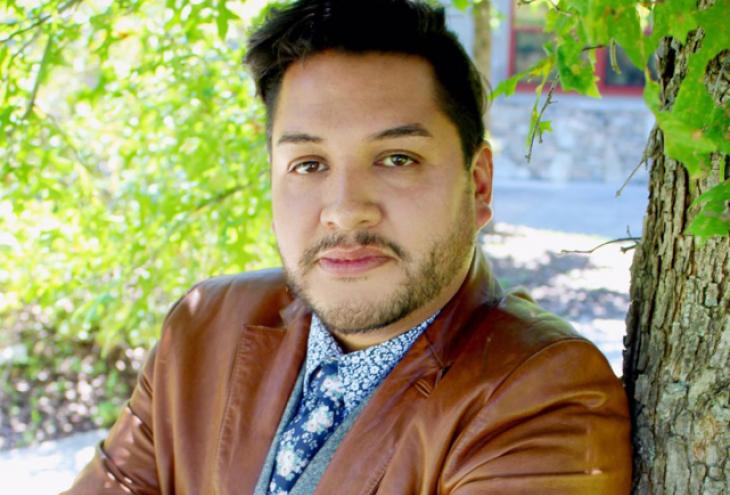Yona Wade is not the type of person who waits for things to happen. It’s an impulse he has been cultivating since he was very young. “As a kid, I always was the one who wanted to be in charge and run the show and make whatever I needed to happen actually happen,” he says. “I never had time to wait for others.”
A member of the Eastern Band of Cherokee Indians, Wade grew up in both North Carolina and Oklahoma. Today, he works for the Cherokee Central Schools as director of community affairs overseeing the Chief Joyce Dugan Cultural Arts Center in Cherokee, N.C., a center designed to bring cultural experiences to the children of the Eastern Band of Cherokee.
Wade comes by his instinct for action naturally, something he inherited from his mother. “She hasn’t always had an easy life,” says Wade, this year’s winner of the Indigenous Excellence award. “She worked in factories and restaurants, put herself through college, and got a degree in social work. My father drowned and my stepfather was an alcoholic, but she always pushed through to provide a life for me and my sisters and did whatever it took to make things happen.”
In both his personal life and in his career, Wade has very much been his mother’s son. After earning an undergraduate degree in voice from the University of North Carolina School of the Arts, Wade decided the transient gig-to-gig nature of opera performance was not for him. So he returned to his alma mater to get an MFA in performing arts management. It was an important step that allowed Wade to both live in a small, rural community like Cherokee (population just over 2,000) and still enjoy the culture and arts one would find in a much larger city. “It allowed me to do the things I wanted to do and create what I wanted to see happen,” he says. “If I wanted to live in a beautiful rural area and have access to things you find in a city, I knew I had to make them happen.”
Opening up new experiences for young people has been central to Wade’s life.
Which is exactly what Wade has been doing and continues to do as the director of community affairs, which includes the Cultural Arts Center, featuring a 1,000-plus seat theater, a 350-seat facility in the round, a dance studio, contemporary art gallery, and two production labs. These are important canvases for Wade and his colleagues at the Cherokee Central Schools to create cultural experiences for the community, particularly its young people. “When I look at the programming we are presenting, I want to make sure that when students leave our school and go to a program in college and if it’s a jazz trio, they know what that is,” he says. “I don’t want them to have that first experience when they’re 20, but when they are 5 or 10 or 12 because those experiences impact what they do as an adult and what they believe is possible.”
Opening up new experiences for young people has been central to Wade’s life. Besides his work at school, Wade is a founding member of the Qualla Education Collaborative, a group of educators, tribal community leaders, and others who work to improve educational outcomes for Eastern Band of Cherokee students from cradle to career. Among other roles, the QEC supports introducing STEM activities such as AISES, SPRK-ing Interest in STEM, and computer science. The ultimate vision for the QEC is to provide a pipeline of talent for the tribe. He also served on the board of the Right Path Adult Leadership Program, created to provide avenues for learning Cherokee history and culture, as well as developing leadership.
Combining STEM and the arts comes naturally to Wade. These days, that means students at the school combine the arts with a focus on STEM classes. “Technology has always interested me, and being mechanical I’ve always enjoyed taking things apart and putting them together,” says Wade, who comes from a long line of basket makers. “The arts go hand in hand with that because you have to learn to be creative in order to improve things. Schools pulled arts out of the classroom and are now putting them back in because they’re missing that creative component. We use ESTEAM (entrepreneurship, science, technology, engineering, arts, and math) to do that. You just can’t have one without the other.”













